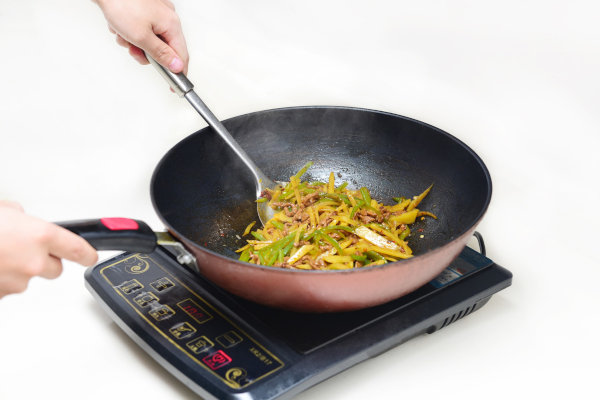Why the Growing Popularity of Induction Cooking

Induction heating is an increasingly popular way of cooking fresh meals and otherwise reheating prepared food. It does not use an open flame nor does it employ a direct electric current that heats a metal coil to directly heat the food. Instead, induction heating uses the power of magnetism to cook any food placed in its immediate vicinity. Here is a short rundown on how it works and on its benefits over the other methods of traditional convection cooking.
The scientific principle
Induction cooking is a true wonder of modern technology. It does not apply heat to a cooking vessel through the use of a flame or heated coil. Instead, it uses magnetism to induce a current in the cooking vessel that then warms due to “resistive” heating – that is, the resistance of the material in the cooking vessel to the flow of electric current through it. This method of heating is not only far more efficient in terms of the energy that it uses but is also incredibly sensitive as the heat can be applied very rapidly and then adjusted almost instantaneously.
The benefits of inductive heating
In theory, induction heating operates on a relatively complicated scientific principle. In reality, it is incredibly easy to implement. It offers a number of advantages over other types of cooking, most notably:
- Induction cooking is quite efficient.
- It introduces less waste heat into the kitchen.
- It can rapidly heat food.
- It can also be quickly turned on and off.
- It does not use a potentially deadly gas as a fuel.
- The cook zone is not defined and can cover a very large area.
- The cooktop does not get very hot making it safer for kids and adults alike.
- The cooktop is easier to clean because spills do not become “baked on.”
Some very minor drawbacks
Inductive heating operates on a very specific scientific principle that must be applied rigorously or it will not produce the results that are anticipated. For instance, the choice of cookware is particularly relevant. Induction heating does not work with non-ferrous metal pots and pans. In addition, the cookware should have a completely flat bottom to help facilitate the movement of the magnetic current. Remember the “inverse square” law as it applies to electromagnetic radiation. Yes, we know it is obtuse but it does apply in this situation – no matter what your high school physics teacher would say.
Affordability
For restaurant owners wanting to get the biggest bang for their appliance buck, commercial induction ovens are easily the most cost-effective way to go. Installation is fairly straightforward and therefore relatively modest in cost. The machines, themselves are, by and large, quite durable and dependable making them less costly to maintain and repair. Finally, and most importantly, commercial-grade induction ovens are the most efficient when it comes to electricity usage – a major benefit in a thriving restaurant that runs them 18 hours per day.
For more information on why magnetic induction cookers are growing increasingly popular in the commercial restaurant trade as well as what installation, repair and maintenance of these 21st century marvels entails, please contact us at General Parts Group. We can be found online at www.generalparts.com or reached directly at 888-498-1238.


